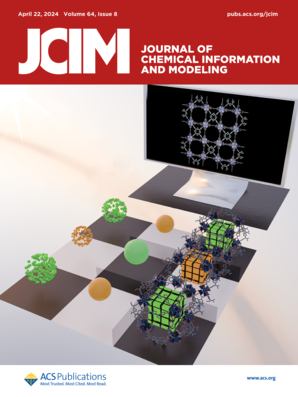SeqMG-RPI: A Sequence-Based Framework Integrating Multi-Scale RNA Features and Protein Graphs for RNA-Protein Interaction Prediction.
IF 5.6
2区 化学
Q1 CHEMISTRY, MEDICINAL
引用次数: 0
Abstract
RNA-protein interaction (RPI) plays a crucial role in cell biology, and accurate prediction of RPI is essential to understand molecular mechanisms and advance disease research. Some existing RPI prediction methods typically rely on a single feature and there is significant room for improvement. In this paper, we propose a novel sequence-based RPI prediction method, called SeqMG-RPI. For RNA, SeqMG-RPI introduces an innovative multi-scale RNA feature that integrates three sequence-based representations: a multi-channel RNA feature, a k-mer frequency feature, and a k-mer sparse matrix feature. For protein, SeqMG-RPI utilizes a graph-based protein feature to capture protein information. Moreover, a novel neural network architecture is constructed for feature extraction and RPI prediction. Through experiments from multiple perspectives across various datasets, it is demonstrated that the proposed method outperforms existing methods, which has better performance and generalization.SeqMG-RPI:一个基于序列的框架,集成了多尺度RNA特征和蛋白质图,用于RNA-蛋白质相互作用预测。
rna -蛋白相互作用(RNA-protein interaction, RPI)在细胞生物学中起着至关重要的作用,准确预测RPI对理解分子机制和推进疾病研究至关重要。一些现有的RPI预测方法通常依赖于单个特征,并且有很大的改进空间。本文提出了一种新的基于序列的RPI预测方法,称为SeqMG-RPI。对于RNA, SeqMG-RPI引入了一种创新的多尺度RNA特征,该特征集成了三种基于序列的表示:多通道RNA特征、k-mer频率特征和k-mer稀疏矩阵特征。对于蛋白质,SeqMG-RPI利用基于图的蛋白质特征来捕获蛋白质信息。此外,构建了一种新的神经网络结构,用于特征提取和RPI预测。通过跨多个数据集的多角度实验,表明该方法优于现有方法,具有更好的性能和泛化能力。
本文章由计算机程序翻译,如有差异,请以英文原文为准。
求助全文
约1分钟内获得全文
求助全文
来源期刊
CiteScore
9.80
自引率
10.70%
发文量
529
审稿时长
1.4 months
期刊介绍:
The Journal of Chemical Information and Modeling publishes papers reporting new methodology and/or important applications in the fields of chemical informatics and molecular modeling. Specific topics include the representation and computer-based searching of chemical databases, molecular modeling, computer-aided molecular design of new materials, catalysts, or ligands, development of new computational methods or efficient algorithms for chemical software, and biopharmaceutical chemistry including analyses of biological activity and other issues related to drug discovery.
Astute chemists, computer scientists, and information specialists look to this monthly’s insightful research studies, programming innovations, and software reviews to keep current with advances in this integral, multidisciplinary field.
As a subscriber you’ll stay abreast of database search systems, use of graph theory in chemical problems, substructure search systems, pattern recognition and clustering, analysis of chemical and physical data, molecular modeling, graphics and natural language interfaces, bibliometric and citation analysis, and synthesis design and reactions databases.

 求助内容:
求助内容: 应助结果提醒方式:
应助结果提醒方式:


